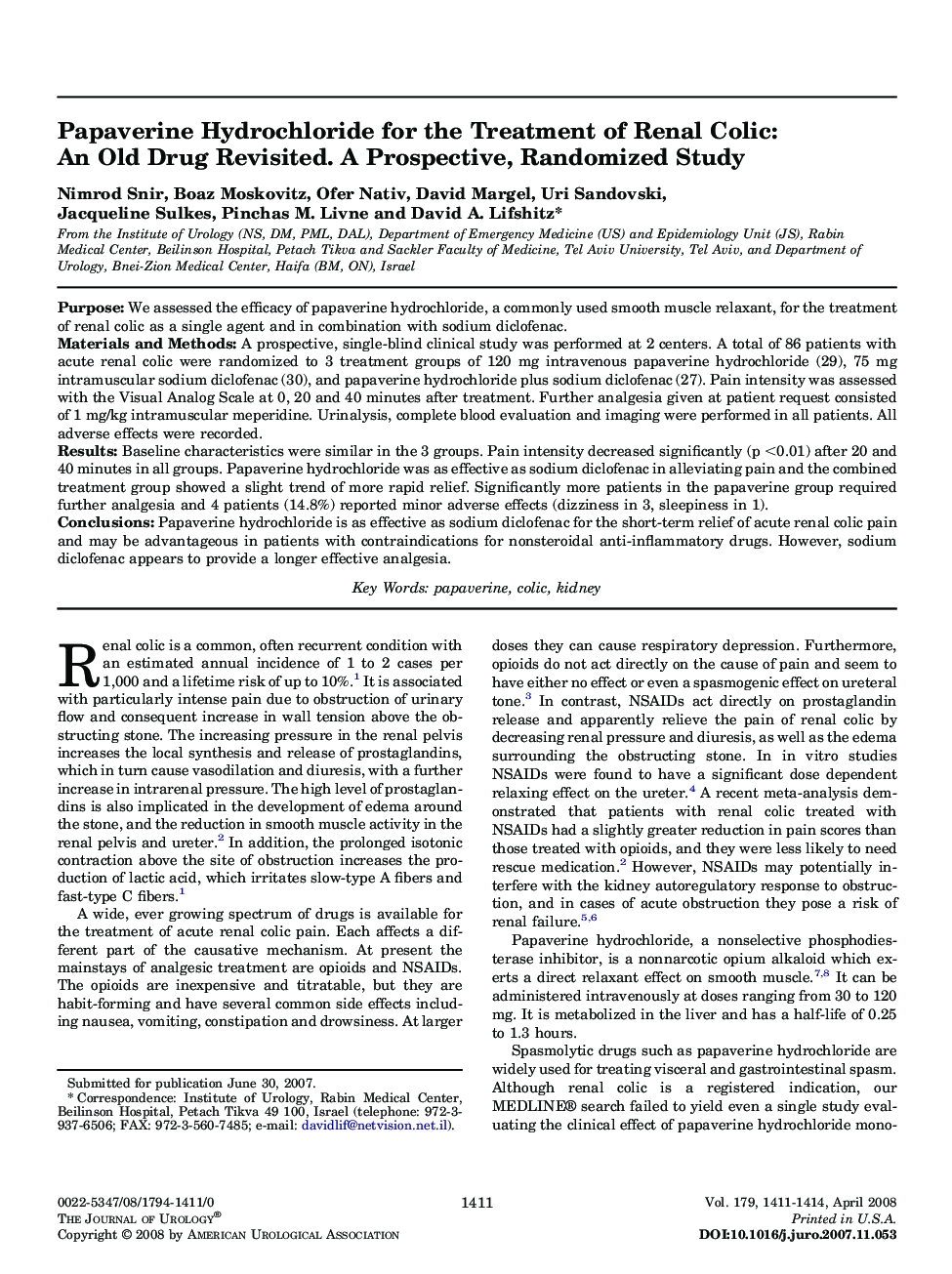| Article ID | Journal | Published Year | Pages | File Type |
|---|---|---|---|---|
| 3878260 | The Journal of Urology | 2008 | 4 Pages |
PurposeWe assessed the efficacy of papaverine hydrochloride, a commonly used smooth muscle relaxant, for the treatment of renal colic as a single agent and in combination with sodium diclofenac.Materials and MethodsA prospective, single-blind clinical study was performed at 2 centers. A total of 86 patients with acute renal colic were randomized to 3 treatment groups of 120 mg intravenous papaverine hydrochloride (29), 75 mg intramuscular sodium diclofenac (30), and papaverine hydrochloride plus sodium diclofenac (27). Pain intensity was assessed with the Visual Analog Scale at 0, 20 and 40 minutes after treatment. Further analgesia given at patient request consisted of 1 mg/kg intramuscular meperidine. Urinalysis, complete blood evaluation and imaging were performed in all patients. All adverse effects were recorded.ResultsBaseline characteristics were similar in the 3 groups. Pain intensity decreased significantly (p <0.01) after 20 and 40 minutes in all groups. Papaverine hydrochloride was as effective as sodium diclofenac in alleviating pain and the combined treatment group showed a slight trend of more rapid relief. Significantly more patients in the papaverine group required further analgesia and 4 patients (14.8%) reported minor adverse effects (dizziness in 3, sleepiness in 1).ConclusionsPapaverine hydrochloride is as effective as sodium diclofenac for the short-term relief of acute renal colic pain and may be advantageous in patients with contraindications for nonsteroidal anti-inflammatory drugs. However, sodium diclofenac appears to provide a longer effective analgesia.
